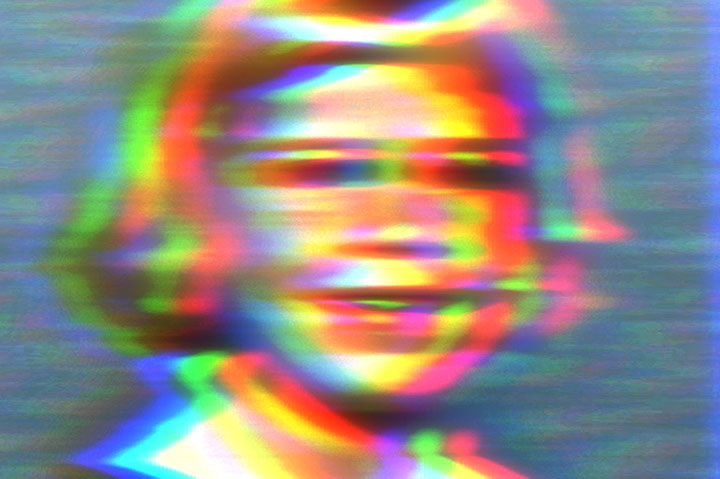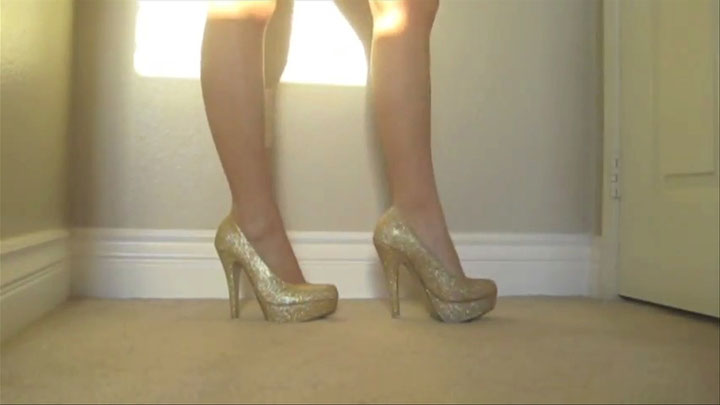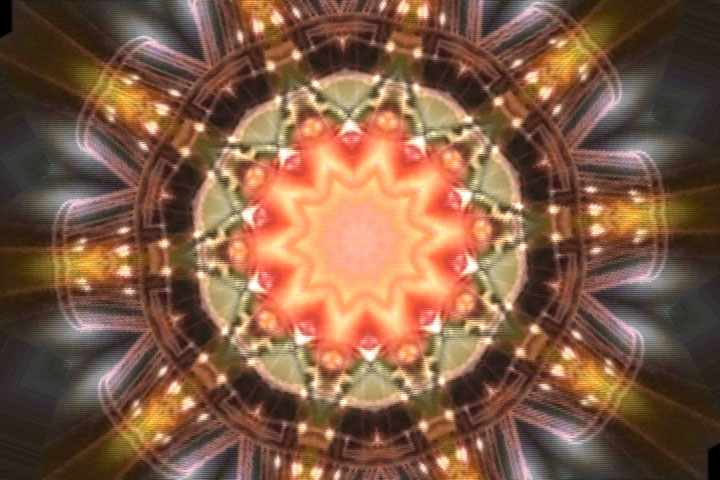Issue 1/2014 - Net section
Image-free in the Midst of the Images
Television and Internet as a Source – Jesse McLean’s Videos
The work of US artist Jesse McLean is characterised by her novel approach to Found Footage or, to be more precise, by a new kind of awareness in dealing with images that are familiar to us from television and the Internet. McLean gleaned the material for this undertaking primarily from private YouTube videos or television formats (quiz and game shows, telenovelas, television preachers etc.). In her first videos McLean primarily addressed pop culture phenomena, such as how people listen to music and watch television. However, what makes her works so radically different and disturbing is the way she grapples with human projections that are an expression of the asymmetry between technology and emotion in advanced industrial societies, in which all that remains of feelings is alternation, fear, hatred or adoration. McLean delves into the emotions that stem from images of the other.
In Magic for Beginners (2010) we hear: “People sometimes say that the way things happen in the movies is unreal, but actually it’s the way things happen to you in life that’s unreal.” Or, as Karl Marx wrote in 1841 in the comments on his doctoral thesis (MEW, Vol. 40, p. 370): What I imagine is a genuine imagination for me. We make debts of our imagination. That means all gods have had a real existence. “Real taler have the same existence as that the imagined gods have”. In other words: McLean does not ask what is real about faith but asks what kind of reality belief assumes and how it is manifested through the media. The human is deposited in things. What we are can now be measured only in terms of the things with which we surround ourselves. We understand ourselves through these objects; we communicate via things. And what will remain of us when we no longer exist? McLean’s The Invisible World (2012) therefore asserts: “Unlike Nature, science and technology are not static, they are restlessly on the move; and, at each further move that they make they produce disturbing and bewildering changes in the alien environment that they have imposed on us.”
It proves in the process to be increasingly irrelevant whether the material is found or self-generated. McLean has also recorded material for her more recent videos. It is the quality of the image that counts: the way in which it is impregnated by its origins and its utilisation. That is something different from a special effect. McLean never uses the footage, whether found or produced, in a decorative or atmospheric sense to create an image that functions in isolation, and makes a statement – the image therefore never exists as a beautiful appearance alone; nor does she deploy the images in series or in an additive mode, by lining them up one after another to generate meaning through similarity. Sometimes the poor technical quality of the material is almost repellent, and it gives the videos a nearly raw, unfinished, unbalanced air. McLean seems to prefer a kind of dirty, artless material that pursues no aesthetic aspirations in the pictorial procedures, for example in the quiz shows or televised sermons. That however is part of her practice; rendering visible the fact that the images have already been seen and used, and have suffered wear and tear or, in other words, showing that they exist in relation both to those who produced them and to those who have viewed them.
It is entirely apparent that McLean has been socialised through television and not so much through cinema, and her vision is clearly shaped more by shows than by films. This primarily has an impact on how she handles the material. She refuses to succumb to a decorative approach or an additive strategy. It is the relationship to those who are viewing and desiring that she targets. She counters the danger inherent in a fascinating image by showing those who are fascinated. The images have always already been viewed, are never original, never seen for the first time—quite the contrary. In conversation with Kent Lambert, McLean explained: “I mostly use stuff that’s widely available on purpose because the very fact that it’s already swimming in the public sphere is part of my interest in using it.”
Through this approach McLean avoids general dangers that arise when dealing with found cinematic images: being content with the impact of an image and simply adapting it, or reducing images to motifs that, so to speak, always show the same thing, are serial, become old chestnuts. In the wake of Bruce Connor’s A Movie (1958) and Matthias Müller’s Home Stories (1990), there are always twofold dangers lurking when dealing with found footage, which runs the risk of calcifying into a fascinating detail or a mere motif. Emulators of Connor and Müller are copied a thousand times over themselves on YouTube nowadays. The Internet has become a huge archive, with a general trend towards everyone having access to everything. That devalues the procedure that once seemed suited to teasing out a sub-history from narrative cinema and hence from our childhood memories. Today, it is a matter of common sense to harvest motifs from feature films and to add to these. Above all, this increasingly impedes an engagement with the question of what could come after or in conjunction with found footage in an artistic sense, that is to say, with the question of whether one can make new images at all, whether everything has not in essence already been shown. The material being re-used has already undergone changes in how it is used socially, yet this is not made visible, let alone discussed. Engagement with found footage in at least the last ten years, in other words, since the Internet, digital editing systems and at the latest since YouTube’s emergence in 2005, has essentially been shaped by the way in which the found material did indeed become stranger and stranger and the editing sequences more and more virtuoso, yet now without any engagement with the media-technology and societal changes in one’s own immediate surroundings. Everything kept on merrily chugging ahead, as before, just better. Things only began to look somewhat different when television, and subsequently the Internet, became identifiable as socialising forces, and when it became clear that cinema, and thus also the films produced for cinemas, were losing societal significance. Perhaps using material from old films lost its critical dimension at that point, if it had not already done so, or at least lost its social relevance when people stopped watching old films, or watching films in the cinema, or even on TV.
McLean shows how television makes the private political and neutralises it. Rather than succumbing to the danger of showing a fascinating image, she alienates it, like the found material from a Heidi film. In this process she draws on include repetition or duration, pushed to the point of being painful. Rather than succumbing to the danger of showing a fascinating image, she truncates scope for the image to generate meaning, as for example in Remote (2011), where she consistently cuts the image before something happens that could fill up the frame. The narrative, all the figures, all the motifs, are cleared out of the feature films, in order to allow what the narrative always represses to appear at the edges of the images: the pre-linguistic as horror. For example, McLean always extracts the moment of waiting, the interruption of the societal narrative, those almost ghostly moments in which it is uncertain whether the silence will tip over into violence, subjection, decline or instead liberation from the structure. The image is pushed to the point where it no longer narrates anything, no longer represents anything, is suddenly transformed, as if set to leap forward. That is however not a quality of the image itself but rather of the duration with which McLean imbues it, sometimes with obtrusive insistence, for example in The Eternal Quarter Inch (2008), when, together with the audience, we must contemplatively endure a religious concert. The images must be brought to a point at which they are broken out of the societal structure to which they belong, at which the societal-medial conditioning of feelings is transformed. That is the intrusion of the real into the symbolic realm, for example the earthquake in the video Somewhere Only We Know (2009). The presentation is interrupted in the double sense of the term as a now-it-could, now-it-should, the moment when the societal and media-driven conditioning of feelings is suspended and an encounter with oneself could occur. McLean makes it possible to experience the blind spot of fascination, image-less in the midst of the images.
Translated by Helen Ferguson




